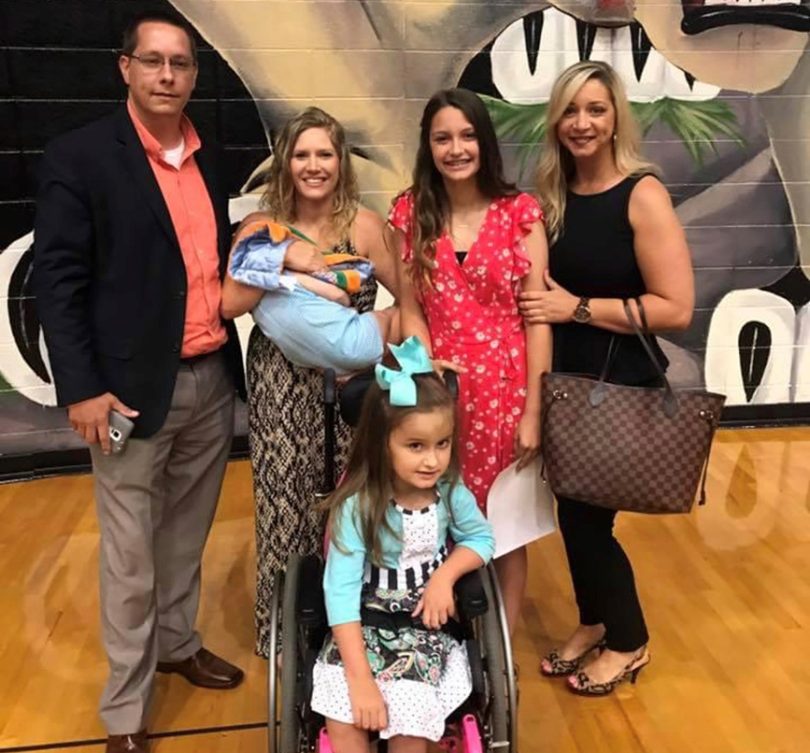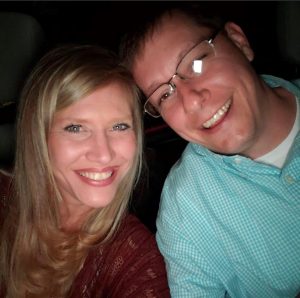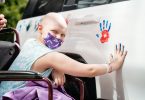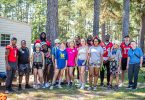One day in February, Steven Herrington and his brother went for a short golf cart ride on the family farm.
An ordinary activity for most people, but for 43-year-old Herrington it was a miracle.
He’d just gotten out of the hospital the day before and was in recovery after nearly dying – twice.
Before his hospital stay, Herrington had been feeling bad for a few weeks but resisted his family’s urging to go to the emergency room.
Then one day he had chest pains and couldn’t breathe.
“It was emergent,” said Julie Deason, Herrington’s sister.
About 30 minutes after arriving by ambulance at Augusta University Health, his heart stopped.
Herrington was a very healthy young man – a husband, a father of four, and an owner of two businesses.
But that day in mid-January, lying in the emergency room, “he had all the signs of what we call cardiogenic shock,” said Dr. Musa Sharkawi, an interventional cardiologist.
Herrington’s heart was barely moving, resulting in very low blood pressure.
“We had to intubate him because he was struggling to breathe. Soon after that, he went into cardiac arrest, where his heart completely stopped,” Sharkawi said.
The ER physicians performed CPR and gave him epinephrine to revive him in preparation for moving him to the cardiac catheterization lab, where the cardiology team was planning to give him a mechanical support device.
However, Herrington went into cardiac arrest a second time. He could not be moved while they were trying to revive him and again restore his heartbeat and blood flow to his body.
Sharkawi called the cardiac surgeon, Dr. Vijay Patel, surgical director of the mechanical cardiac support and the ECMO program, to have Herrington placed on an extracorporeal membrane oxygenation device (ECMO).
“In the emergency department, this is what we call ECPR – rescuing patients while they are undergoing chest compressions. That’s something that is not done in most places. It’s considered a heroic effort, and we’re very proud to offer this therapy for patients,” Sharkawi said.
An ECMO is a machine that temporarily replaces the work of the heart and lungs to keep blood circulating through the body and supply it with oxygen. The machine acts as a temporary heart and lungs, to resuscitate the patient, give the organs a chance to rest, and provide an opportunity for the patient to recover and potentially survive.
The ECPR not only provides oxygenated blood to his body but also mechanical chest compressions, as if his heart was still pumping.
Even with these lifesaving devices in place moving blood through Herrington’s body, his heart still was not moving, putting him at high risk for developing blood clots in his heart and the lungs. They knew that would mean he had no chance of survival.
“We learned that after we put in the ECMO device and restored blood flow and oxygen to his body, it was not enough for Herrington to survive. If we did not do anything else very quickly, the blood that is not moving out of the heart and lungs would clot. If it clots, then there is no chance of surviving. We had to think on our feet and be creative. We put him on a LUCAS chest compression device to empty the blood from his heart and lungs as best as it was possible while deciding on our next steps,” Patel said.
Quickly, Sharkawi moved Herrington to the cardiac catheterization lab to insert another device directly into his heart to empty the heart and this successfully restored blood flow out of the heart and his lungs. The team put Herrington on the path for survival.
By day two or three, doctors knew that his brain had, miraculously, not suffered any damage. He was going to recover.
“Before he went home, he had regained about 50% of what his normal heart function should be,” Patel said.
Patel said the fast and simultaneous actions of everyone caring for the patient contributed to successfully reviving Herrington: the heart failure team, the interventional cardiologist team, the heart surgery team, as well as the emergency team and a large group of hospital staff.
“That was an important element that allowed us to expeditiously not only make decisions but also intervene in a timely fashion, to put him on ECPR,” Patel said. “I cannot overemphasize this capability available for patients in such dire conditions at Augusta University Health. What that means is the possibility for a patient who’s arrested twice, without a beating heart and no blood flow through his body and brain can survive being in the right place with the required expertise. And that patient is technically dead unless you can revive him.”
He estimated that from the time Herrington arrived until he went home, more than 100 medical personnel had cared for him in some way.
“It definitely speaks volumes to the dedication and collegiality of the hospital here and the communication and collaboration that had to happen to get him out the door. It should definitely be emphasized,” said cardiologist Dr. Evan Hiner.
Sharkawi said there are only a few centers in the country that can perform the lifesaving measures that Herrington received.
“This ECMO procedure is usually done in the cardiac catheterization lab or the operating room. Not in the emergency department in a small room while actively doing CPR,” he said. “This just speaks to the multidisciplinary approach and expertise that is required to take care of these patients. Man, it really did take a village,” he said.



